Nexus: STEM and the Arts
My guest blogger is Sammy Parker, a former English teacher who has also designed and directed professional learning programs for The National Faculty and was my colleague in the educational leadership component of SERVE.
Now retired, Sammy tutors kids in writing, does online editing, and writes poetry. He “loves Shakespeare, Faulkner, Elmore Leonard, and Louise Erdrich; has a multiyear subscription to Smithsonian magazine; and is fascinated with the impending move of Voyager I into interstellar space.” His commentary here on the profoundly important connection between STEM studies and the arts is compelling!
STE(A)M: The Important Nexus of STEM and the Arts
by Sammy Parker
I’ve always wanted to use nexus — “a connection or series of connections linking two or more things’ — in a title. Forgive me: it’s an English teacher thing, and the critical linkages between the arts and STEM present an excellent opportunity.
My goal here is not to provide numerous tips on how to make or implement the STE(A)M connections.
I clearly don’t have the expertise to do that, and I have no doubt that the skills and creativity of teachers who are inclined to do so and the guidance, sharing, and initiative of excellent teachers/consultants like Anne Jolly will help move forward much of the impetus for change, both in curricular modifications and classroom implementation.
Rather, I’d like to remind readers of some of the ways this nexus between STEM and the arts works and why a stronger alliance between the two is extremely advantageous to both (and especially to STEM). As kids are keen to remind us, it’s very good to know not just the “what,” but also the “why.” Here’s some “why,” especially necessary in an era of increasing specialization, decreasing funding streams, and a growing penchant by policymakers—who, most often, are NOT teachers, goldarn it—to eliminate the arts in tight-money situations.
The education of scientists
Santiago Ramón y Cajal, awarded the 1906 Nobel Prize in Physiology or Medicine and supremely adept in pathology, histology, and neuroscience, enjoyed gymnastics, painting, and creative writing. Also, he had some strong opinions about the education of scientists and the kind of students who succeed at the highest level. He wrote:
The far-sighted teacher will prefer those students who . . . [are] endowed with an abundance of restless imagination [and] spend their energy in the pursuit of literature, art, philosophy, and all the recreations of mind and body. . . . [I]t appears as though they are scattering and dissipating their energies while in reality, they are channeling and strengthening them.”
Channeling the spirit of Cajal, Roald Hoffman, 1981 recipient of the Nobel Prize in Chemistry and a published poet, playwright, and music producer, believes that “[b]y being a natural language under tension, the language of science is inherently poetic.” Another laureate who acknowledged the seminal relationship between the arts and science was Dutchman Jacobus Henricus van ’t Hoff, winner of the first Nobel Prize in Chemistry in 1901. Besides inventing stereochemistry, co-inventing physical chemistry, founding geochemistry, and helping create the new field of the history of science, he was a flautist and painter and wrote poetry in four languages.
van ‘t Hoff cited Galileo (artist, craftsman, musician, writer), Kepler (musician), and Davy (one of the founders of modern chemistry and a poet praised by, among others, Coleridge) as examples of individuals who had consummate scientific knowledge and skills that were enhanced and nourished by their broad interests in the arts. And as an interesting, more contemporary aside, Steve Jobs described himself and his Apple science and engineering colleagues as artists.
Why put the “A” in STEAM?
These are people who definitely put the “A” in the middle of STEM at its highest levels of achievement. In fact, as Steven Ross Pomeroy, science-news writer and blogger and assistant editor for Real Clear Science, notes in an August 2012 article in Scientific American:
Nobel laureates in the sciences are 17 times likelier than the average scientist to be a painter, 12 times as likely to be a poet, and 4 times as likely to be musician.”
In “Identifying and Training Creative Scientists,” published in Imagine That! and reprinted in Psychology Today, Michele and Robert Root-Bernstein make an equally interesting but counterintuitive observation: “Nobel prizewinners are rarely the best academic students. They do not have IQs that are any higher than those of scientists overall. They don’t test higher on standardized tests. They DO bring a much wider range of skills, knowledge, talents, and methods to their work.”
The correlation implied by these two interesting pieces of information is distinct and provocative, and the implications are compelling for how we structure a curriculum and an educational climate that best nurtures students in STEM studies. That said, what is the real value of cultivating these disciplinary relationships if the ultimate goal is to increase the quantity of kids really getting excited about STEM and the quality of instruction and experiences we offer them?
Arts + STEM: Raising achievement for all students
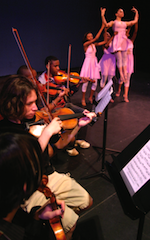
• tended to score better in science and writing;
• engaged in more beneficial extracurricular activities;
• were more likely to attend college and graduate;
• had higher career goals, including those related to STEM; and
• were more civically engaged.
These results speak loudly to our nationally expressed goal both to raise the level of achievement of our lowest-performing students and to raise the level of involvement and interest in STEM. Solid research shows that low-SES students are some of our most academically needy and poorest performing, so the implications of this study offer a powerfully compelling reason to consider how better to align the arts with STEM.
Both arts & sciences challenge us to be creative and solve problems
Related to the core of each and to a range of student aptitudes from very low to gifted, both the arts and the sciences embrace the value, beauty, and challenge of problem solving, imagination, and creativity.
As astronaut Mae Jemison, who is not only a doctor and the first black woman in space but a dancer and actor, eloquently said at the 2002 TED conference, “The difference between science and the arts is not that they are different sides of the same coin . . . or even different parts of the same continuum, but, rather, they are manifestations of the same thing. The arts and sciences are avatars of human creativity.”
How can this play out in classrooms or other educational settings? Pomeroy notes two excellent examples: “At the Wolf Trap Institute in Virginia, ‘teaching artists’ are combining physical dance with . . . math and geometry. In Rhode Island, MIT researcher Jie Qui introduced students to paper-based electronics . . . [to explore] the use of technology in expressive art. Both programs excited students about science while concurrently fueling their imaginations.”
The potential for the arts to expand students’ imaginations and enhance their abilities to confront projects and problems with new and enhanced creativity is exhilarating. And, of course, as numerous examples, research, and anecdotal evidence attest, these are key characteristics that translate into other academic areas, especially in STEM.
The evidence is persuasive
From the lives and words of Nobel laureates to the eye-opening changes that the arts have on students, especially low-SES ones, to the dynamism and success of classrooms and other educational settings that meld the best of both worlds, the evidence for the immense value of creating and cultivating a nexus of the arts and STEM is persuasive.
However, given the realities of increasingly stringent public-school funding and the general lack of the arts’ appeal to many policymakers, teachers need to educate themselves about the STE(A)M value and potential and begin to advocate actively for the inclusion of the arts in school curricula. Teachers who perceive the value of STE(A)M should also engage with other teachers in devising innovative, challenging ways of bringing science, technology, engineering, math, and the arts (both individually and collectively) in all of their permutations into our classrooms.
The most beautiful experience we can have is the mysterious. It is the fundamental emotion that stands at the cradle of true art and true science.” ~ Albert Einstein

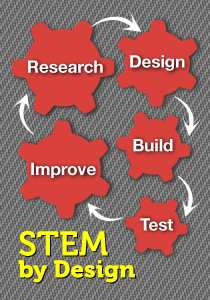
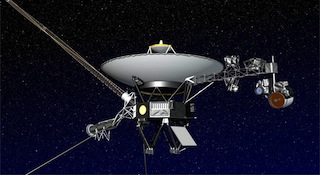
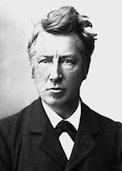
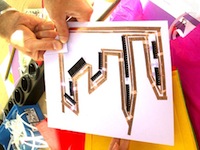

































“The arts and sciences are avatars of human creativity.” Wow! I love that statement! This post speaks so clearly to the mutual connectivity of art and STEM, and to the need for education to cease being a series of silos – even ever-widening silos – and to embrace all the richness that comes from that interconnectivity. Thank you for your eloquent, thoughtful post, Sammy! If schools and systems follow your lead, our students will, indeed, bring a “much wider range of skills, knowledge, talents, and methods to their work.”